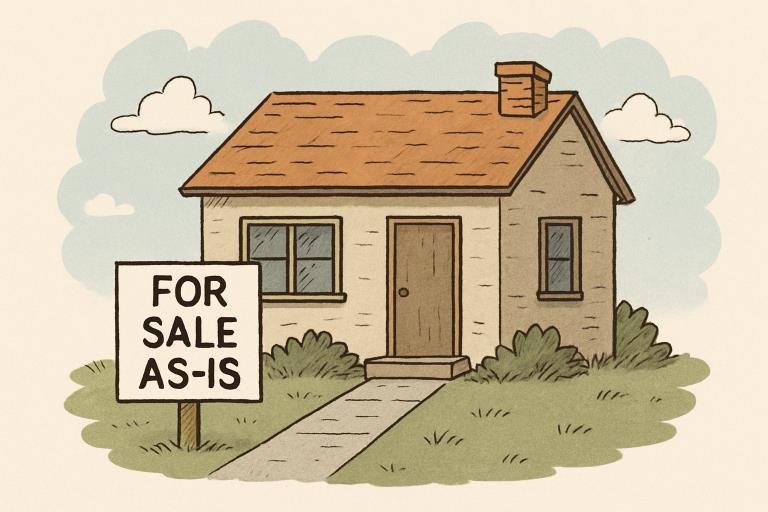Key Takeaways
- Selling a home as-is can save time and money on repairs, but you’ll need to be realistic about pricing and buyer expectations.
- Accurate pricing, effective marketing, and transparent disclosures are crucial for attracting buyers and achieving a fair sale.
- Cash offers can accelerate the process, but sellers must weigh speed against potential financial trade-offs.
Understanding the As-Is Sale
Choosing to sell your home as-is means listing it in its current state, without making repairs or upgrades. This strategy can significantly reduce your financial and logistical burden, allowing for a simpler and often faster transaction process. Many homeowners choose this option when they want to sell fast and move forward without the stress of renovations.
It’s important to understand that buyers tend to approach as-is homes with a critical eye. They are aware that repairs will be required and will factor this into their offers. While as-is listings do limit your responsibilities as a seller, you must be prepared for offers that may be lower than those for move-in-ready properties.
Setting the Right Price
Accurately pricing your as-is home is the most crucial step to maximizing your return. If you overprice your property, it will sit on the market, deterring serious buyers. If you underprice, you risk leaving money on the table. The best approach is to seek a professional appraisal before listing your property. To compete effectively in your local market, review comparable sales and seek input from a trusted real estate professional. The goal is to secure a fair offer—one that accurately reflects your home’s current condition while still attracting motivated buyers who are specifically looking for as-is properties.
Highlighting Your Home’s Potential
Marketing an as-is home doesn’t mean hiding its flaws—it means accentuating its strengths. Consider what makes your home unique, from its location and lot size to its original features that might appeal to restoration enthusiasts. Offering a pre-listing inspection report can boost credibility and transparency, giving buyers the confidence to move forward with their offer.
Marketing Strategies for As-Is Properties
Successfully marketing an as-is home is about more than just listing it online. Invest in professional photos that capture the property’s best features and create compelling descriptions that highlight aspects requiring minimal attention, such as open space or great neighborhood amenities. Target your listing to buyers who are seeking investment opportunities or fixer-uppers, as these audiences often expect some work and appreciate the potential for future value.
Utilizing social media and real estate platforms ensures a larger pool of potential buyers sees your house. As noted by The Enterprise World, well-crafted listings that emphasize both the property’s potential and the opportunity for value improvement can lead buyers to see beyond any cosmetic flaws.
Negotiating Offers
Negotiations are a key part of the as-is sale process. Buyers will naturally request concessions or reductions based on inspection results. Know your minimum acceptable price before negotiations, and be ready to compromise on minor details. Flexibility in negotiations, such as offering to cover closing costs, can help solidify an agreement faster and avoid protracted back-and-forth.
Keep in mind that many buyers expect to negotiate when buying as-is properties, so starting with realistic expectations can smooth out the sale process.
Legal Considerations and Disclosures
Full disclosure is essential. Even when selling as-is, you are legally required to reveal any known issues with the property. Neglecting this responsibility can expose you to lawsuits after closing. Providing an honest and thorough disclosure demonstrates good faith and protects from future legal disputes. In most states, sellers are also required to comply with specific local disclosure requirements.
Considering Cash Offers
Cash buyers are often more flexible and can move much faster through the sales process than buyers relying on loans. With fewer contingencies and no need for lender approvals, you can usually close the sale within days or weeks rather than months. However, cash offers often come in lower than financed offers, so it’s vital to weigh the appeal of a swift sale against possible financial concessions.
Final Thoughts
Selling your home as-is is about striking a balance between convenience and realistic expectations. By setting a fair price, showcasing your home’s strengths, and maintaining transparency through disclosures, you can attract serious buyers and reach a deal that fits your goals. Whether you prioritize speed, simplicity, or achieving the highest possible offer, approaching the process with the right information will ensure a successful outcome.



